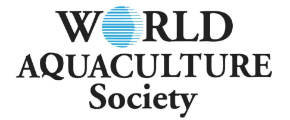THE ECONOMIC FEASIBILITY OF SMALL-SCALE BAY SCALLOP Argopecten irradians concentricus CULTURE IN FLORIDA
The culture of bay scallops has received much attention in recent years on the east coast of the US. In particular, bay scallop culture has been attempted in the Long Island Sound region, mid-Atlantic, and the Gulf coast of Florida. In all cases, producing bay scallops destined for the whole, rather than meat only, market has been the primary objective. Consumption of whole bay scallops represents a non-traditional seafood product in Florida. Culture and market trials were conducted in north central Florida during 1997 and 1998 using production methods suitable for the lease site located off the mouth of the Crystal River. Two production technologies were incorporated into hypothetical operations and evaluated in the economic analysis. Production assumptions were based on field trial experiences. The rack system consisted of rebar frames each designed to hold 10 cages off the bottom. The longline system consisted of a series of mainline segments, with individual cages connected to a mainline with a gangion. Each system was designed to accommodate 100 cages (nursery and growout). The total initial investment for each system was approximately $4,000, with the largest capital cost component being the cages. Scallops were assumed to be stocked at 3mm shell length into nursery cages. After 4 months, the 18mm scallops are transferred into growout cages at a density of 200 per cage (50/sq ft). The 45-50 mm scallops are harvested after a 5 month growout period. The cumulative survival was assumed to be 60%. Based on current market prices for variable inputs and projected market prices for whole bay scallops, each production system generated approximately $1,800 in net returns. The cost per harvested scallop was about $0.13, with a break-even survival rate of 30%. A positive cash flow for each system occurred in Year 2. Shellstock bay scallops were delivered to four local restaurants for consumer tests. Product was cooked and served in the shell by the chefs. A Likert scale survey was administered to patrons who consumed whole scallops. Approximately 75% of the 106 patrons surveyed indicated that whole bay scallops were either excellent or very good in terms of appearance, taste, and texture. In addition, 87% of surveyed patrons indicated they would purchase the product again. Given that some of the scallops were harvested at 35-40mm, some consumers deemed cultured scallops to be a relatively low value in the context of the menu price paid. The research findings suggest a latent market does exist in north central Florida for whole, bay scallops. The culture of bay scallops may serve two purposes for existing clam growers: as a source of supplemental income and a means to diversify into other forms of shellfish culture. Scallop culture in Florida is currently constrained by a lack of commercial seed sources and an underdeveloped market.













